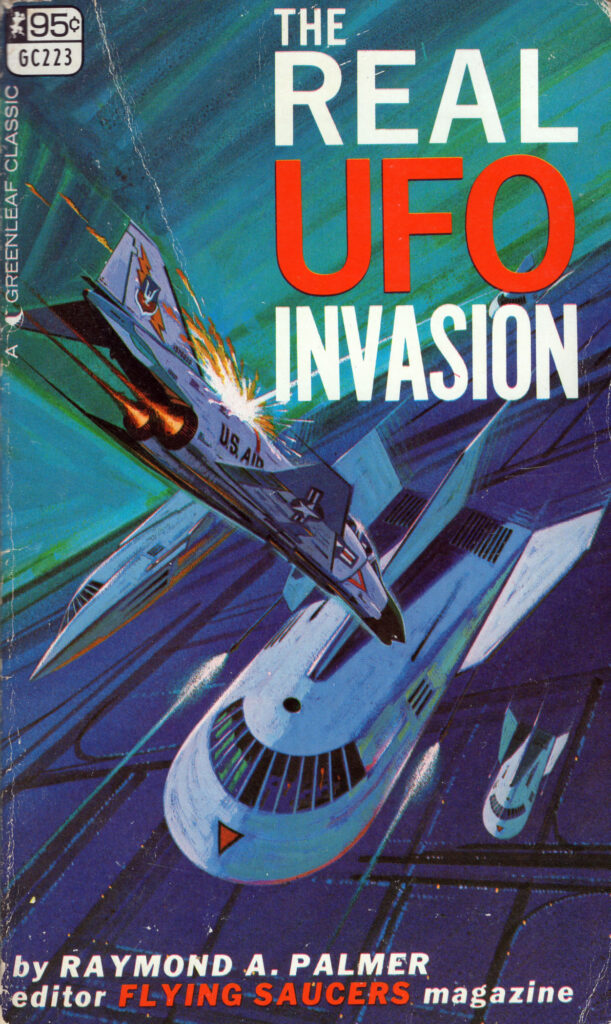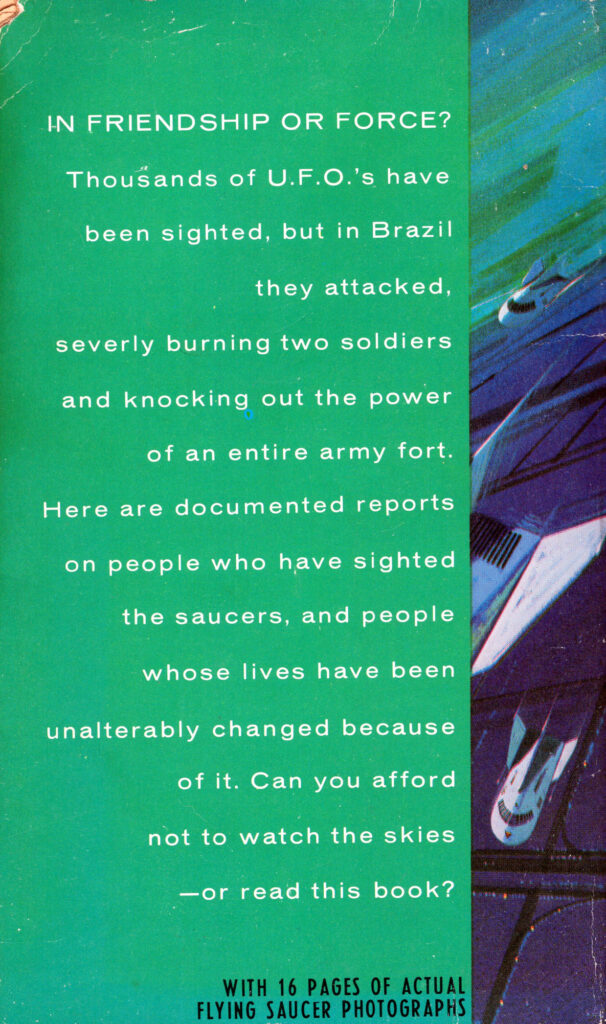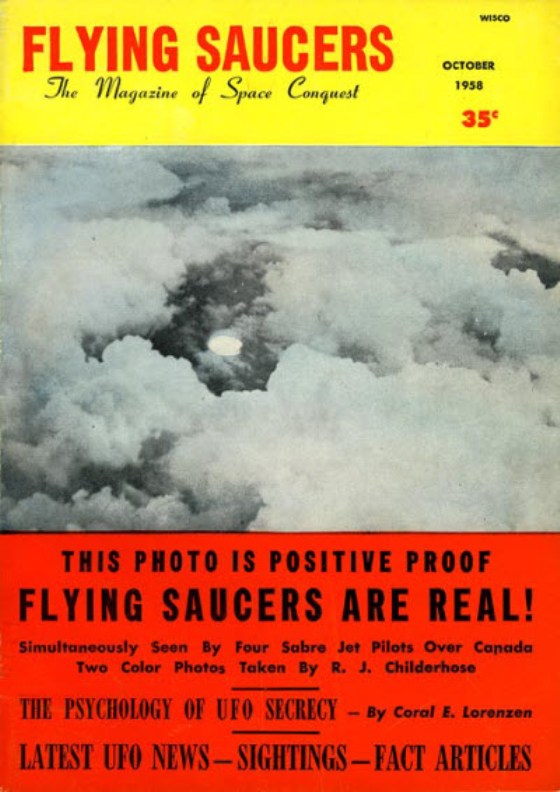
With alleged revelations that the US Government has, for decades, been secretly reverse-engineering actual alien spacecraft and is even in possession of non-Earthly “biologics,” it seemed worthwhile to revisit UFO conspiracies from yesteryear.
Few were more prominent in the field during the 1940s-1960s than Raymond A. Palmer. He was quick to ask tough questions on the front line of famous sightings. To be fair, however, many of these UFO encounters became famous only because of his effective sensationalism. As editor of the popular sci-fi magazine Amazing Stories and then Flying Saucers, a periodical devoted to the documenting, researching, and reporting of “factual” unexplainable encounters with flying objects, he had a megaphone (and conflict of interest) to assure public obsession with UFOs remained high.
This book is actually a curated anthology of notable articles originally printed from 1957-1960 in the pages of Flying Saucers magazine. Since the magazines are rare finds today, it’s nice to have another source available here. Even though the book offers little illumination to our understanding of UFOs today, it’s a great snapshot of public interest/anxiety around extraterrestrial beings at this time.
The book opens with the very true statement that UFOs exist. There have been, and continue to be, flying objects spotted in the sky which cannot be categorized or explained. He also prefaces that the book will be limited to facts, free of fiction or opinion. This statement is less convincing since hypothetical musings are often employed when suggesting conspiracy.
The first few articles are intriguing. These are indeed stripped free from sensationalism and contain purely fact-based (or at least fact-sounding) details around encounters with UFOs. They are extracted from reputable sources, such as military personnel and astronomers, who we trust to rationally analyze scenarios of flying objects moving in unearthly capacities.
There’s also a chilling article which postulates on testing nuclear weapons in space as preparation for a potential alien invasion. Again it supplies fact-sounding details which lead the reader to believe that, whether or not aliens exist, the government believes they are a threat real-enough to devote substantial resources.
It’s a captivating first few chapters, I will admit. Even rational me turned the pages with a bug-eyed expression and readiness to storm Area 51. From chapter five on, however, the magic is lost.

Palmer devotes over a hundred pages (more than half the book!) to the 1947 Maury Island Incident. This was an exceedingly far-fetched UFO encounter, widely known to be a hoax. Palmer had personal interest in the story, however, since he funded a researcher to travel to Tacoma, Washington, to find out more when it happened. The chapter includes a lot of I-heard-this and third-hand (or fourth or fifth) recounting from hearsay, making it highly skeptical.
The reality, however, is that two officers investigating the incident died in an airplane crash on their return trip to California. Confident there was something suspicious about the crash, Palmer argues that The Government wants you to believe the Maury Island Incident was a hoax, but what about the possibility these officers Knew Too Much and had to be bumped off before they went public?
It’s all classic conspiracy stuff, with big dramatic questions based on no evidence, or worse, based on evidence that was all fabricated to begin with. Very disappointing to have half the book wasted on this case study, but it did inform me of a famous UFO hoax that I wasn’t familiar with, so at least it had some historical benefit.

The next quarter of the book is devoted to the photograph of an alleged UFO over the skies of Phoenix, Arizona. These chapters are perhaps even more embarrassing because the entire premise of Palmer’s argument is that because this photograph was only printed once and didn’t cause a national frenzy, there must’ve been a government hush job to keep it quiet. He even ponders if the military went door-to-door, collecting tens of thousands of copies of the Arizona Republic to prevent spread of the image. Oh dear…
Other short chapters include fun case studies which make for enjoyable reading, even if unconvincing. There’s one where a mysterious radio broadcast in Florida claims to be the voice of a resident of Jupiter named Necoma who speaks various Earth languages, as well as a bizarre one claiming to be his native tongue. Necoma reports that we must stop the development of nuclear weapons or the entire solar system will be in danger of destruction. I definitely don’t believe Necoma was a real intergalactic being, but I like his message!
In the end, this book was a fun journey back in time. The articles were primarily written during the ’50s, but its appearance in 1967 is fitting. This was pre-moon landing, but very much during a period of competitive space innovation. Once again, we were looking to the stars with wonder, imagination, and a desire to discover what exists beyond. And this desire of discovery is exactly the reason Palmer justifies questioning authority and the endless pursuit of UFOs.
“Even if we never solve the UFOs,” writes Palmer, “who knows what strange, useful and wonderful things we may discover as a by-product of our prying into the mystery?”
Keep the discussion! Follow us on social:
